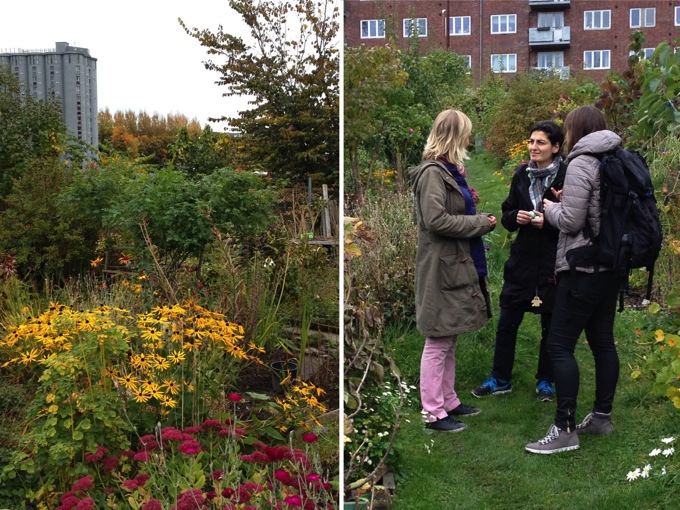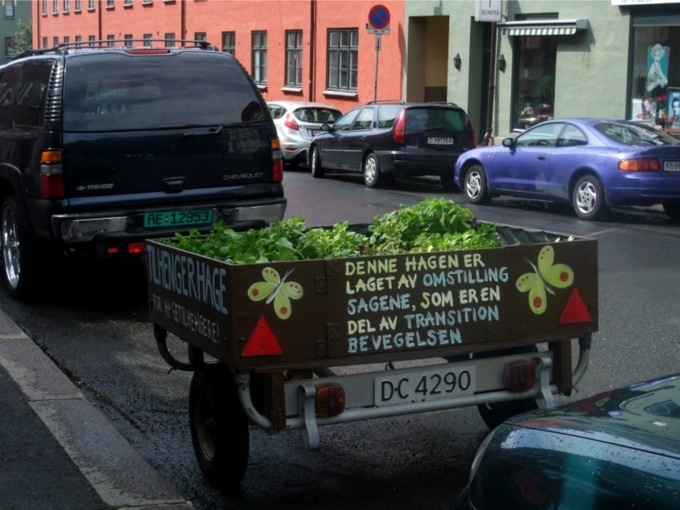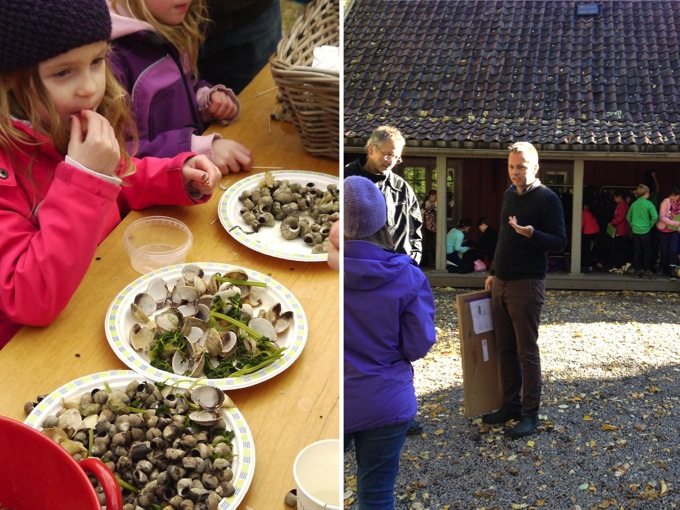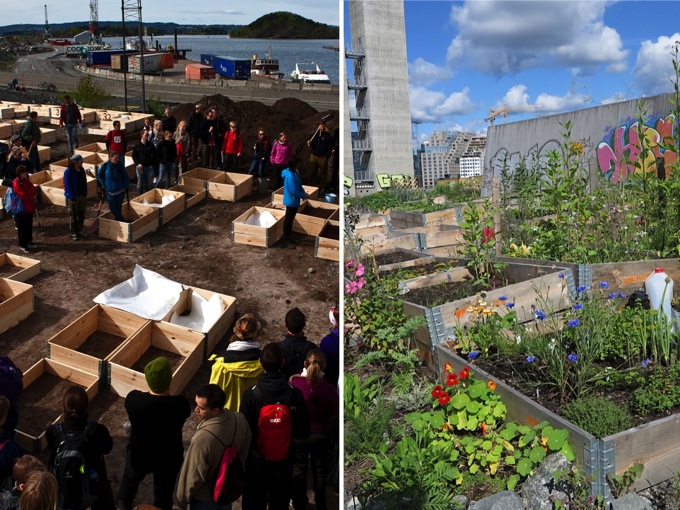Oslo / Opportunities and challenges
Norwegian food culture
During the past decades, new food habits have emerged in Norway. Food has become more international, more diverse and more industrialised. Cities are more disconnected from food production and rely more on import and transport. City dwellers are disconnected with the origins of food. Since the 80’s and throughout the 90’s and 2000’s convenient supermarket food has become the main food trend.
Norway is however “waking up” and rediscovering food traditions and developing a new sense of food culture. Food is receiving a lot of attention in the media and there are several popular TV-programs about food and cooking.
New policies
Urban agriculture has been receiving a lot of attention on a political level in 2012. There are allready opportunities for sustainable food in existing policy, and the suggested new agricultural policy for Oslo provides further opportunities. The politicians are discussing a centre for organic urban agriculture in Oslo. Participation in URBACT thematic network will help to put sustainable food on the agenda, politically, internally in the city administration and externally. A lasting focus on the topic will help support a relativley fresh food movement in Oslo and facilitate cooperation, motivation and inspiration to existing and new initiatives.
Green roofs
The potential for green roofs in Oslo has not yet been mapped, but green roofs are receiveing more attention, both from an energy perspective, from a climate adaptation perspective, from a food growing perspective and and a recreational garden perspective. For the new “Barcode” district downtown (the new high-rise buildings by the central station) the municipality included in the zoning regulations a requirement of a minimum of 50% green roofs. Oslo is planning or considering green roofs for several new buildings where Oslo can influence the development.
A new movement
Spring 2012, the property developers in Bjørvika “Barcode District” decided on an art project; they wished to establish 100 allotment garden plots in the midst of highways, high-rise buildings, asphalt and dirt (see box). Through a newspaper article, they invited the people of Oslo to apply for an allotment, and after 4 days, they had received around 4000 applications (!) This seems to have hit a nerve and the property developers discovered a demand for land and an opportunity to grow food that was not predicted. Together with the MAJOBO project which has registered more than 80 organic food growing initiatives in Oslo, and more than 300 nationally, “The Glory” allotment gardens are enabling a movement of young gardeners, perhaps with a nostalgic and romantic approach to food, to access land and knowledge once lost, but now found. The young gardeners are looking for a sense of community, and through growing food, being a part of the solution for a better future.
Transport
The City of Oslo has done a possibility study to reveal the potential for an efficient city distribution connected to public procurement. “Project Green City Distribution” will develop solutions to achieve a more efficient and environmentally friendly goods distribution in the city centre. This will have implications for food as well as other commodities.
 | Egerløkka allotment gardens | Egebergløkka allotment garden is Oslo’s oldest allotment garden established in 1917 as “the potato allotments”. The allotment garden contains several old fruit trees and has a magnificent view of the city. One of many projects in the garden is a social entrepreneurship project.
| Egerløkka allotment gardens | Egebergløkka allotment garden is Oslo’s oldest allotment garden established in 1917 as “the potato allotments”. The allotment garden contains several old fruit trees and has a magnificent view of the city. One of many projects in the garden is a social entrepreneurship project.
 | Trailer garden – Transition Towns | Transition Towns Sagene planted vegetables, herbs and flowers in a trailer and parked in public parking spaces summer 2012. They did this to show that there is a great need for allotments in Oslo, and that the car gets too much space in the city. A very visible project which gave them quite some publicity.
| Trailer garden – Transition Towns | Transition Towns Sagene planted vegetables, herbs and flowers in a trailer and parked in public parking spaces summer 2012. They did this to show that there is a great need for allotments in Oslo, and that the car gets too much space in the city. A very visible project which gave them quite some publicity.

